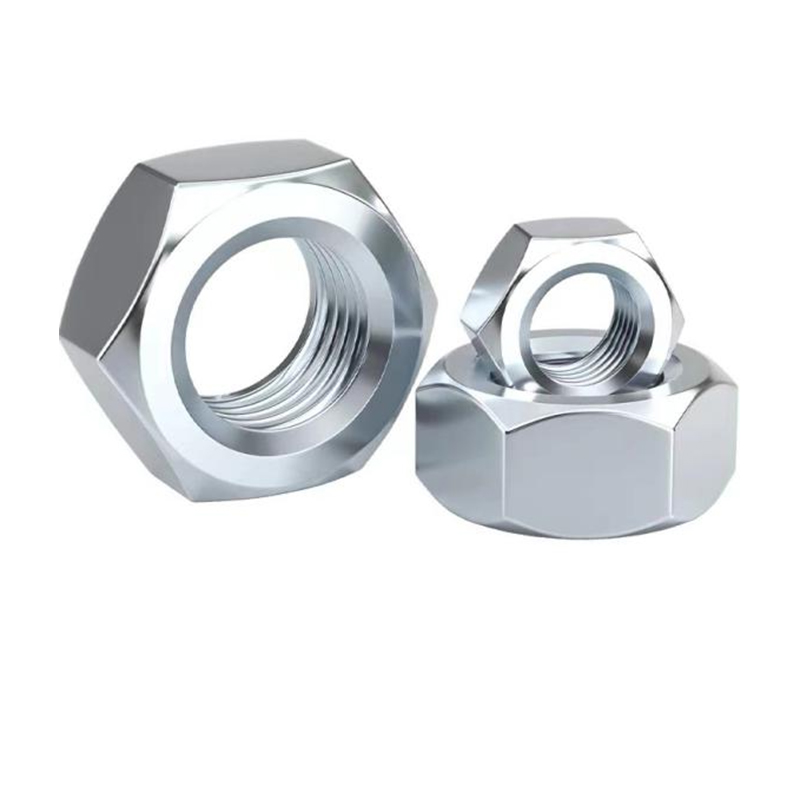How does the coating thickness impact the performance and longevity of a galvanized nut?
The performance and longevity of a hexagonal galvanized nut are significantly influenced by the thickness of its zinc coating. Galvanized nuts are designed with a hexagonal shape that allows for easy handling and secure tightening, while the galvanization process imparts essential corrosion resistance through a protective zinc layer. This layer is crucial for ensuring the fastener's durability in various environments, particularly those prone to moisture, chemicals, or other corrosive elements. The coating thickness plays a vital role in how effectively the nut resists these conditions.
The galvanization process involves coating the nut with a layer of zinc to provide a protective barrier against rust and corrosion. This zinc coating is not uniform but varies in thickness depending on the process and the intended application of the nut. A thicker coating generally means better protection, as it offers a more substantial barrier to corrosive agents. This increased thickness enhances the nut's resistance to environmental factors, extending its operational life and reducing the likelihood of premature failure. In harsh conditions, such as those found in marine environments or industrial settings, a thicker zinc layer can prevent the rapid degradation that might occur with a thinner coating.

However, there is a balance to be struck. Excessively thick coatings can sometimes affect the dimensions and tolerances of the nut, potentially making it difficult to fit with corresponding bolts or threads. Therefore, manufacturers must carefully control the coating thickness to optimize both performance and compatibility. High-quality hexagonal galvanized nuts are engineered to meet industry standards that specify appropriate coating thicknesses to ensure that they provide both effective protection and reliable performance without compromising their fit.
In practical terms, the advantages of hexagonal galvanized nuts with well-regulated coating thickness are evident in their long-term performance. For instance, in construction and manufacturing, these nuts resist rust and corrosion better than non-galvanized alternatives, contributing to the durability and stability of structures and machinery. The resilience provided by a properly coated hexagonal galvanized nut is especially valuable in outdoor and marine applications, where exposure to the elements is constant. This durability translates into reduced maintenance costs and fewer replacements over time, offering both economic and operational benefits.
Ultimately, the thickness of the zinc coating on a hexagonal galvanized nut is a critical factor that impacts its effectiveness and longevity. A well-managed coating process ensures that the nut maintains its protective qualities without compromising its performance or fit. As such, understanding the relationship between coating thickness and the nut's functionality can help in selecting the right fastener for specific applications, ensuring long-lasting and reliable service in demanding environments.
Related products
-

Hexagonal Nylon Head Series
-

Pan Head Cross Series Drill Tail Screws
-

Round Head Huasi Cross Series Drill Tail Screws
-

Round Head Cross Self-Tapping Screw
-

Countersunk Cross Self-Tapping Screw
-

Hexagonal Cement Nail In Plum Blossom Groove
-

Large Flat Head Plum Blossom Groove Grass Rope Nail
-

8.8 Grade Tooth Bar Full Teeth
-

304 Stainless Steel Teeth
-

Stainless Steel Outer Hexagonal Bolt
-

Pan Head Self-Tapping Screw
-

Stainless Steel Pan Head Drill Tail Screw

 English
English  English
English 中文简体
中文简体 русский
русский


